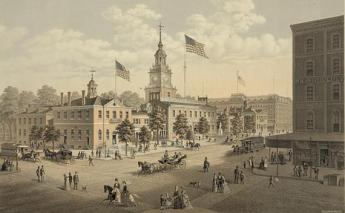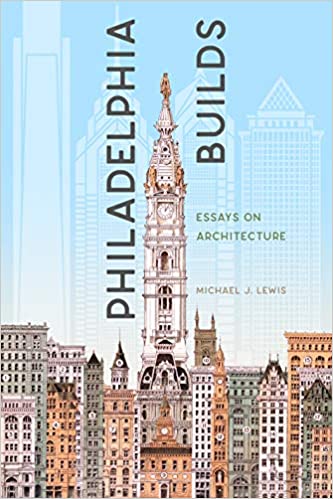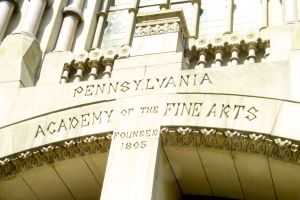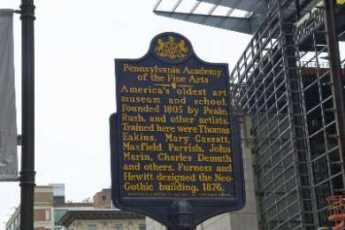Related Topics
Downtown
A discussion about downtown area in Philadelphia and connections from today with its historical past.

Art in Philadelphia
The history of art, particularly painting and sculpture, has been a long and distinguished one. If you add in the art schools, the Philadelphia national influence on artists has been a dominant one.
Architecture in Philadelphia
Originating in a limitless forest, wooden structures became a "Red City" of brick after a few fires. Then a succession of gifted architects shaped the city as Greek Revival, then French. Modern architecture now responds as much to population sociology as artistic genius. Take a look at the current "green building" movement.

Cultural
Culture and Traditions (2)
Right Angle Club 2010
2010 is coming to a close, a lame-duck session is upon us, and probably after that will come two years of gridlock. But the Philadelphia Men's Club called the Right Angle, keeps right on talking about the current scene. A few of these current contents relate to speeches given elsewhere.
Frank Furness (1):PAFA

|
| Pennsylvania Academy of the Fine Arts |
The Pennsylvania Academy of Fine Art is notable for its place in Art history, for its faculty over the centuries, and for its influential student graduates. It is therefore not to slight the institution's remarkable place in the world of art if we pause to notice that the building itself, the place that houses all this, is itself an outstanding work of art. Whenever mention is made of Frank Furness, its colorful and influential architect, the first stop on the list is the building he built to house a school and display its glories. Perhaps the best way to illustrate the achievement is to compare it with the Barnes Museum, which also was built to house a school. It also has an outstanding permanent collection, perhaps a greater one than PAFA. But the Barnes building scarcely gets a mention and is about to be abandoned for a preferable location. The Furness building, however, is a massive pile of solid rock, immovable throughout massive changes in its neighborhood. To move that building out to the Parkway has never even been suggested. You can move if you like; we were here first.
The exhibition rooms are interesting, even clever, but the hand and mind of the architect are best seen in the school, the Academy. Seldom seen by the public, the entrance to the school is underneath the front staircase which sweeps the public visitors off to see the exhibition. Up to the stairs, admire the carved walls, the massive supports and the iron railings and out into rooms with scarlet and gold walls, and a blue ceiling with stars. When it leaves, the public sweeps back down the inside stairs and out the tunnel-like entrance, then down the outside stairs. Where was the school?

|
| PAFA Marker |
It's underneath the exhibition area, reached by a door under the stairs, unnoticed unless you ask for it. There you will find a darkened lecture hall and corridors lined with plaster casts for teaching purposes. But an artist's studio must have diffused northern light, and lots of it; the problem for the architect was to provide a huge slanted northern skylight over a basement. This trick was accomplished by pushing the walls of the first floor out to the street and installing a slanted skylight in the "ceiling" of the overhang. When the overall effect is that of a fortress meant to defend against a barbarian invader, built with massive walls and roof -- hiding a glass skylight is quite an achievement. Furness was a showman; it was not beyond him to place an architectural tour de force right in front of generations of students looking for something to portray.
We are told the building was five years in construction, designed and re-designed as it rose. The resulting effect is achieved by building around its interior as it evolves from bottom to top. Quite a difference from buildings laid out in advance, forcing the interior contents to conform to the initial design without regard to cramming down its contents. There is an overall design at work here; it's evocative of a Norman church with side extensions, but you have to look for that rather than having the architect thrust it in your face.
Originally published: Tuesday, June 08, 2010; most-recently modified: Monday, May 20, 2019